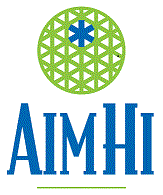- Home
- About
About AIMHIThe Academy of International Mobile Healthcare Integration (AIMHI) represents high performance emergency medical and mobile healthcare providers in the U.S. and abroad. Member organizations are high-performance EMS agencies from both the public and private sectors. By combining evidence-based practices with transparency and close government oversight, AIMHI affiliates provide unsurpassed service excellence and cost efficiency. MissionLeading the transformation of EMS to mobile integrated healthcare through the development of high performance systems, and setting the standard for clinical excellence, accountability, public education, research and economic efficiency. | VisionTo improve patient health and experience of care by promoting excellence in mobile healthcare integration through evidence-based out of hospital healthcare system effectiveness and efficiency. |
High Performance System DesignAs defined by Stout and Overton, HPEMS systems share key features of system design rarely associated with less cost-effective systems with examples as follows:
|

.jpg)
